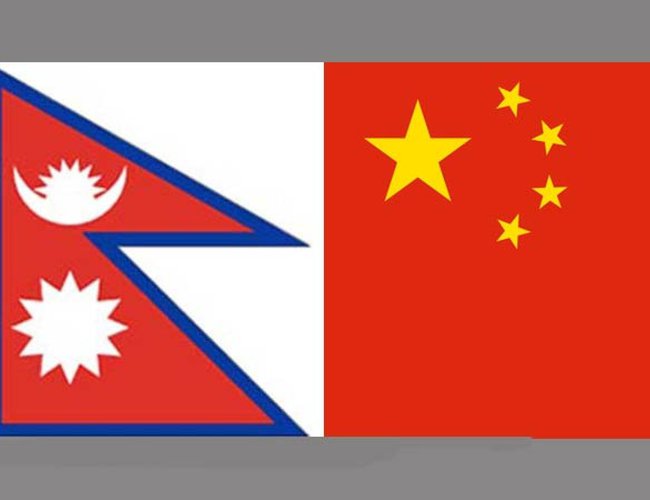
The relationship between China and Nepal has increased manifold during the last decade. After decades of Civil War and political instability, Nepal embraced democracy, and a federal structure was adopted in the 2015 constitution. Since then, apart from a few politicalissues like recurrent elections, democracy has been working well in the hill state. China has been visible as it was enthusiastically involved in the political process of the nascent democracy of Nepal. In the heart of the country’s relationship lies the trade where Nepal, a landlocked hill country, expect better trade and employment opportunities from the infrastructure-related developments. China, in return, wants to develop viable trade infrastructure in Nepal and court the hill state into its sphere of influence. Chinese support for Nepal’s 2015 earthquake was a vantage point in the relationship between the two countries, where China provided 500 million US dollars to Nepal. The deadly earthquake of 2015 wiped out more than 1/3rd of Nepal’s GDP, where more than 8000 people died . The relationship between Nepal and China has grown stronger since then, when Nepal joined China’s flagship Belt and Road Initiative . Chinese President Xi Jinping travelled to Nepal in 2019 to sign multiple agreements. As we are nearing the completionof five years of these agreements between Nepal and China, it becomes essential to look into how these agreements have spawned for both Nepal and China.
Chinese Investments in Nepal
China and Nepal signed the Trade and Transit Agreement (TTA) in 2016 . Nepal,after that, became among the first nations to sign up for China’s Belt and Road Initiative (BRI), the latter’s grandiose, trillion-dollar initiative to increase its influence worldwide. Additionally, the two neighbours have been in negotiations for many railway and transmission line projects since 2018. Given that Chinese investment in Nepal was significantly smaller prior to 2015, this suggests a gradual increase in finance levels. The TTA made inroads for exports and imports via third country where China gave access of seven of its sea and land ports to Nepal, which includedfour seaports (Tianjin, Shenzhen, Lianyungang and Zhanjiang) and three land ports (Lanzhou, Lhasa and Xigatse) . China is also building the Kyirong Kathmandu railroad through one of its BRI projects worth 2.15 billion US Dollars . Reports have also observed the different nature of investments made by state-owned and private enterprises in China. State-owned enterprises are extensively involved in developing big infrastructure such as hydropower and road construction, while private infrastructure invests mainly in small enterprises .
Trade Between Nepal and China
Nepal has a total GDP of 40 billion US dollars and is expected to grow at a reasonable five percent growth rate in 2024. A lion’s chunk of Nepal’s exports goes to India, accounting for almost 72 percent of Nepal’s exports. After that, it sends 11 percent of its exports to the United States of America. Germany, Turkey, and the UK also became its top trading partners, with a meagre of 2 to 1 percent of exports. Surprisingly, China has not reached Nepal’s list of top exporting countries. Nevertheless, talking about imports, while India remains the top importing destination of Nepal, amounting to 63 percent of its total imports, China comes second, where around 13.5 percent of Nepal’s imports happen from China. Nepal’s other import partner countries, such as Indonesia, Argentina, and the USA, have single-digit import representation .
What are the main hurdles?
Tourism and hydropower are Nepal’s leading industries. Nepal’s leaders have expected Chinese tourist footfall, but it has not been up to there expectations. Regarding the pre-coronavirus scenarioin 2019, 17,0000 Chinese tourists visited Nepal . However, in the post-Coronavirus case, after the opening up of borders, only 60000 Chinese tourists visited Nepal, while Nepal received record numbers of tourists from India and the USA . In the hydropower industry, too, multiple delays in projects are causing increases in costs and making them economically inviable. The most recent example is the West Seti Hydroelectric Project, which, if completed, would have created a great economic boon for Nepal’s economy. However, it could not be completed. First, the license was with an Australian company for two decades, and when the Chinese developers of the world’s largest hydropower dam, ‘The Three Gorges Project’, were given its license in 2011, work was expected to be done in no time. However, 13 years later, the work is still stalled .
In May of 2017, Nepal formally joined the BRI. 2019 saw Nepal identify nine development projects under the Belt and Road Initiative (BRI), including establishing a technical institution, expanding a 400 KV electrical transmission line, and building new highways, tunnels, and hydropower dams.However, there has not been any noticeable advancement in any of the related projects despite extensive debates on the implementation of BRI in Nepal. Instead, China has unilaterally added several Chinese-funded projects to the BRI framework, including a few roads, the Pokhara International Airport, and the Damak Special Economic Zone. Even before Nepal formally joined the BRI, these projects were first decided upon by both parties.Nepal is facing a problem with BRI projects, with higher loan costs of about 4.2 per cent and a shorter period of grace time .
If we talk about the Trade and Transit Agreement (TTA) provisions, it has proven to be disadvantageous for Nepal. According to Ministry of Industry, Commerce and Suppliesofficials, no single shipment has moved between China and Nepal after seven years of signing the agreement. Through TTA, Nepal also envisioned cheaper petroleum products from Kazakhstan but received a noamountof products from Kazakhstan via China. It has planned to import at least 30 per cent of its oil requirements from Kazakhstan via China.In 2016, China and Nepal agreed to develop frontier trading posts, but this did not culminate in reality . Nepal’s freight service providers are uncomfortable doing business via China because ofthe abrupt stoppage and closing of borders. The Kathmandu Post reported that some Nepali traders accused China of deliberately stopping them and creating an “undeclared trade blockade” .
The Way Ahead?
There is no doubt that Nepal will benefit from the cordial neighbourly relationship with the world’s top growing economies, be it China or India. After 2015, Nepal’s trade percentage with China has increased, but the hurdles on the road to economic integration remain steadfast. There is a huge trade deficit between China and Nepal, which China needs to address. China,the region’s largest economy, can provide better concessions for Nepal’s trade to grow. It can include developing infrastructure in the border area by giving aid through grants, not large interest loans. China must prioritise Nepal’s needs before economic gains from the infrastructural projects. It will only work to balance the economic relationship between the two states.
*Harsh Pandey is a doctoral candidate at the School of International Studies at Jawaharlal Nehru University. He is also a Life member of the International Centre for Peace Studies, New Delhi.
The views and opinions expressed in this article are those of the writer and do not necessarily reflect the views or positions of paper.
1 https://www.bbc.com/news/world-asia-33266422
2https://www.orfonline.org/expert-speak/nepals-bri-shaped-dilemma
3https://nepaltradeportal.gov.np/trade-agreement?p_p_id=utilportlet_WAR_tepc&p_p_lifecycle=0&p_p_state=normal&p_p_mode=view&_utilportlet_4WAR_tepc_param=getDetail&id=307#:~:text=Trade%2Drelated%20Agreements%20with%20the%20People's%20Republic%20of%20China,-Bilateral&text=In%20March%202016%2C%20Nepal%20and,more%20than%208000%20Nepali%20products.
4https://www.stimson.org/2020/economics-and-influence-chinese-investment-in-nepal/
5https://nepaltradeportal.gov.np/
6https://theannapurnaexpress.com/news/an-interview-with-chinese-ambassador-hou-yanqi-2751/
7https://kathmandupost.com/money/2023/12/28/nepal-welcomes-one-million-tourists-a-post-covid-record
8https://kathmandupost.com/valley/2018/09/20/collapse-of-deal-calls-for-serious-soul-searching
9 https://www.indiavsdisinformation.com/en/20231103/how-china-seems-to-be-ensnaring-nepal-in-its-debt-trap-designs
10https://www.orfonline.org/expert-speak/assessing-nepals-economic-deals-with-china
11https://thehimalayantimes.com/business/kathmandu-kyirong-railway-meeting-to-be-held-in-december/













